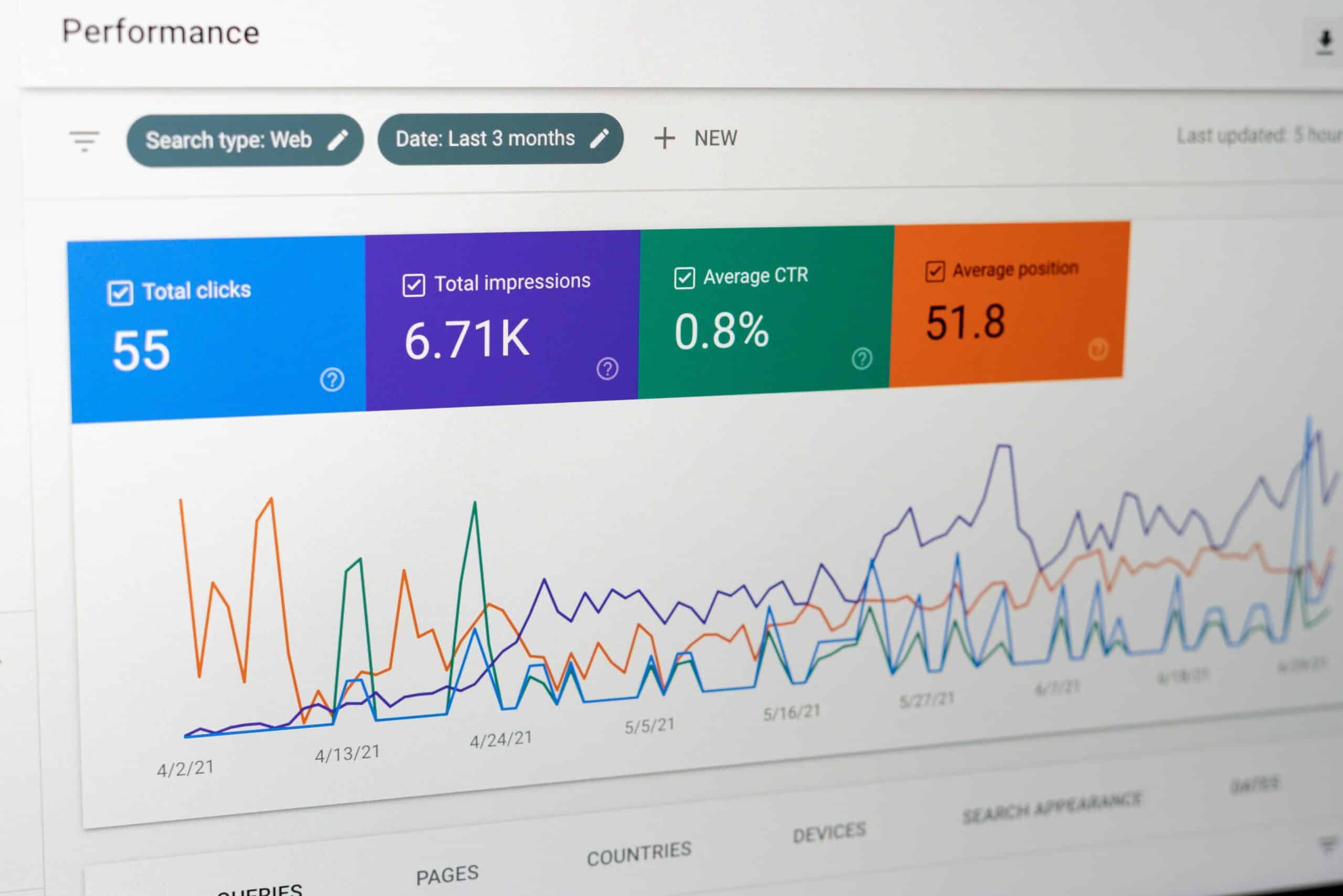Have you already read part 1 of my quick summary of my personal experience at Brighton SEO April 2022? The one where I start chatting about the content marketing talks I went to? Right, then grab a cup of coffee (or tea, or your favourite tipple). I’m going to spill the beans on some of the main takeaways of the rest of the conferences I was lucky to attend.
Keyword Research (applied to Content)
These are my highlights of everything Keyword Research I saw at Brighton SEO April 2022. It’s going to be short and because well, we don’t want to spend three hours here. Or do we?
‘How to go after long tail keywords’ by Paola Didione
As a self-confessed fan of the long tail, I must say that Paola Didione didn’t discover anything new… Yet, I found her talk so interesting and useful that I enjoyed every second. She was all about giving practical advice (loved it!) and tips to make any content marketer’s life easier.
Just to recap, these were her main tips to research long tail keywords at scale:
- Research the head term (filter by low search volume)
- Find questions à answerthepublic is perfect for that
- Check competing pages
- Who’s ranking for the main term?
- Check what they are ranking for?
Then, move on to Keyword mapping (and keep it updated) and avoid cannibalisation. Sounds easy? It really isn’t as easy as pie, but with a little bit of practice anyone can do it.
‘Effective zero volume keyword research and why it’s important’ by Mark Williams-Cook
Let me start by saying that Mark Williams-Cook’s talk was an absolute joy. Not only he was incredibly entertaining and a fantastic speaker, but he also made a great point for investing on zero volume keyword research. I just wish a certain manager I had in another life could have been there to have some of their prejudices towards zero-volume debunked. If you’re reading this, you know who you are.
Head and middle keywords are difficult to rank for – even if they are super tempting. Long-tail keywords are easier to rank for, but they have lower search volumes. Why should you bet on the minority of keywords? Well, intent volume is more useful than search volume and most of the time new keywords, with great potential, are so new that Google tells us they have 0 volume. If you target them, you’ll be ahead of the curve and can reap great traffic.
Why does it work? To keep it very short (check out Mark’s deck for extra info):
- Google’s Domain diversity update from June 2019 means increased opportunity for smaller sites for long tail queries
- October 2019’s BERT update allowed Google to understand the nuance of queries, reducing reliance on other metrics.
- Passage Indexing in October 2020 helped Google to find the real needle in the haystack of information.
- And now Google’s lens is even wider… which means that the playing field is also wider
How to find those zero-volume keywords to target? These tools and tactics will be key:
- Answerthepublic.com
- Alsoasked.com
- Google CSEs = Google Custom Search Engines ? work well with Reddit and Quora
- Site:reddit.com/subreddit “how do I”
- Cse.google.com
To sum it up, follow Williams-Cook advice and include zero volume in your strategy and forecasting. It is possible to get traffic from them. And remember, before you build your content hub, you need to make the spokes that will hold the structure in place.
‘The Hidden Gems of Low Search Volume’ by Liraz Postan
Liraz Postan gave a different take on the same subject and emphasized something that anyone who works in SEO should be aware of – do not discard low-search volume keywords because you think they’ll bring nothing. Trust her and me. We know. Go beyond the numbers. Yes, we know high search volume keywords look very juicy. But they don’t exclude each other. You can (and should) do both.
Where to get ideas for low search volume keywords?
- Google autocomplete
- SEMrush
- Surfer SEO
- People also ask
- Any other tool you like
Why?
- Because newly launched products will have low searches.
- Because you can capture trends and get the traffic
- Because it will allow you to create niche content that solves real questions from real users.
The main takeaways?
- Don’t be afraid
- Educate your bosse and make sure they understand.
Content Management for Content Marketers
Although I went to a few more talks during Brighton SEO April 2022, here are the highlights of these that revolved around the topic of Content Management. It may not be the sexiest topic in lots of minds (it is fascinating, trust me) but it’s key when you’re building teams and must scale content production.
“How we scaled our Saas Content Ops from 4 to 40 posts a month in under 2 months” by Emilia Korczynska (from User Pilot)
Emilia Korczynska was kind enough to share the ‘Content Epics System’ she implemented successfully in her organisation to scale up content production. Joshua Hardwick already explained on day one why scaling great content is not easy. Well, on this talk we discovered that once you’ve got great writers, it’s the right process that will get you the results. Why? Because it streamlines and optimises every step involved in content production and brings the best out of them.
How did they do it? For starters, they introduced the Content Editor Role into the mix and put a lot of emphasis on creating fantastic briefs so that writers know exactly what to write and how to write it.
In short, the formula is:
1 theme = 1 epic = 1 writer = 1 edit = 1 specific day to deliver
They have a 5-column system:
- To do – Editor assigns to writer
- In progress – Writing (Writer)
- Editing – Writer assigns to editor
- Proofreading – Editor assigns to Proof-reader
Ideally, in a content team you should have the following ratio: 10:2:1. This means you will need:
- 10 writers
- 2 editors (each will manage 5 writers)
- 1 proof-reader (will review all content)
For Korczynska, this means that:
- Each Freelance writer writes 1 post per week
- Editors create 5x briefs and edit editing 5x blogs per week.
- Proof-readers proof and publish 10 posts/week (2/day)
The speaker also explained why briefs are absolute key. And if you’re wondering what a good brief needs to have, here are the basics:
- All SEO guidelines
- All H2/H3/H4s
- Talking points
- Images
- Links to use
- Intro/conclusion
On top of everything else, here are a few tools that may help any Content Marketer handling Content process:
- SurferSEO
- StoryChief – It’s a content management system that allows editors to communicate directly with writers, among other things.
- Google Data Studio à for performance tracking.
You can find the deck and a recording of her presentation here.
‘How to tackle digital content hoarding’ by Adrian Imms
As much as I love content, it’s also true that sometimes there is too much of it on certain websites (looking at you, academia). That means some sites become cluttered. Then people can’t find what they are looking for/need. Then they get lost, frustrated and leave. That is why sometimes less is more. And proof that for a site to be great it needs to fit the needs of those who’ll use it.
Adrian Imms explained very nicely how to bring digital hoarders on board when we need to streamline content, away from their emotional attachment to each URL and bit of text. To sum it up, you need to be transparent, but nice. Try to outline the benefits to the organisation. Explain the risks of doing nothing. And explain that you’re not trying to revolutionise anything. It’s just an evolution anyway.
Now, how do you clean digital hoarding? You need to put your plan into action with an audit that confirms redirects for pages you’ll be removing, canonicals and no-index tags, and other pages that will need new links and copy. Once you’ve got that, go Marie Kondo that site.
If you clear the clutter, not only people will find what they need quicker, but also move through the funnel faster. That means revenue and usability will likely increase. And you’ll also have brought on board all those converts who were feeling a bit so-so about digital de-clutters at the beginning.
‘Content Readability’ by Emily Hill
Having a background in journalism and being a writer myself, I found Emily Hill’s talk highly interesting and relevant. In it, in a very concise and fun way, she told how when we’re writing for the web (but not only) we need to make sure our content is readable by everybody.
First, if we’re speaking to users, they need to be able to understand what we’re sharing with them. Secondly, Google cares about readability, as it’s an issue of accessibility and usability. Basically, if no one can understand the content on your page, then it’s not fulfilling its goal.
Considering that the average reading age in the UK is 9 years old. That doesn’t mean dumbing down your content. But you need to make it readable and understandable. And how do you do that? Well, here are some quick tips:
- One point per paragraph
- Not too many statistics
- Clear purpose and audience
- Swap out difficult words for simpler words
And because we all like tools, here are a few that can help you optimise your content to make it more readable:
- Readable (it’s a custom-built readability assistant)
- SEMrush SEO writing assistant
- Yoast SEO plugin
- Grammarly
- Hemingway Editor
There’s more to it, and you can find it on this quick cheat sheet on her website. But this will get you started.



